16 Things Every Traveler Should Know Before Going To Mexico
It's hard to come up with one reason why Mexico remains one of the most popular vacation destinations. Why? Because there are too many reasons to count. And while you've likely heard of the country's most famous spots — Cancun, Los Cabos, the Riviera Maya, and Mexico City — there is a lot more of Mexico that begs to be explored. That's because Mexico is blessed with stunning beaches, amazing history, fascinating traditions, incredible food, and beautiful natural scenery that's hard to exhaust in just one trip. If all of this sounds overwhelming, don't worry. Oyster.com has been to Mexico so many times that we've figured out just how to have the perfect vacation there. From when to visit Mexico to the best things to eat and how to stay safe, read on for the 16 things that every traveler needs to know before going to Mexico.
-
1. The history of Mexico goes back centuries, and you can still see it everywhere.
-
2. Mexican food is incredibly diverse (and don't be afraid of street food).
-
3. Everyone wants to know, "Is Mexico safe?" The answer is complicated.
-
4. Credit cards are widely accepted in Mexico, but you should always carry pesos.
-
5. The weather in Mexico varies by destination and time of year.
-
6. English is widely spoken in Mexico's tourist areas, but Spanish will help.
-
7. What's the best time to go to Mexico? That depends.
-
8. You don't need a visa to visit Mexico, but a passport is required.
-
9. Mexico is home to Magic Towns, known as Pueblos Magicos.
-
10. Mexico has several LGBT-friendly destinations.
-
11. You might feel an earthquake in Mexico.
-
12. Mexico is home to stunning natural landscapes.
-
13. Mexico's all-inclusive resorts are some of the world's best bargains...
-
14. ...But the country offers way more than all-inclusive vacations.
-
15. The day starts a little later than you might expect in Mexico.
-
16. Don't drink the water in Mexico (but seek alternatives to bottled water).
-
Your Must-Stay Hotel Picks in Mexico's Most Popular Regions:
-
Your All-Inclusive Resort in Cancun: Le Blanc Spa Resort Cancun
-
Your Luxury Hotel in the Riviera Maya: Rosewood Mayakoba
-
Your Adults-Only Hotel in Tulum: The Beach Tulum
-
Your Beachfront Hotel in Los Cabos: Chileno Bay Resort & Residences
-
Your Secluded Hotel in Riviera Nayarit: The St. Regis Punta Mita Resort
-
Your Boutique Hotel in Mexico City: Las Alcobas

Mexican history began well before any Spaniards arrived, and thriving indigenous communities and kingdoms covered the landscape for centuries. While that history is too long to detail here, you can see remnants of it throughout the country. Most famously, Mexico is home to several stunning pyramids. Chichen Itza — a UNESCO World Heritage Site — is the most famous and is a popular day trip from Cancun and the Riviera Maya. Rivaling Chichen Itza are the amazing pyramids of Teotihuacan, situated about an hour north of Mexico City. There, you can climb atop the Pyramid of the Sun for amazing views across the landscape all around. Other famous historical ruins are found in Tulum and Coba in the Yucatan, as well as at Monte Alban in Oaxaca. In fact, without leaving Mexico City you can see evidence of the region's indigenous, ancient cultures at the Templo Mayor (atop which the massive Catedral Metropolitana was built).
Colonial relics abound throughout the country as well. Mexico City's Centro is one of the largest expanses of colonial architecture in the Americas, though smaller cities like San Miguel de Allende, Oaxaca, Guanajuato, Puebla, and others provide a fascinating glimpse into the country's colonial history as well.

If you think Mexican cuisine is limited to tacos, you'd be wrong. In fact, Mexican food comes in limitless regional and local variations. Yes, tacos are a staple almost anywhere you go, but even these come in a dizzying array of styles, from the pita-like tacos al arabe of Puebla to warm-spice infused cochinita pibil tacos from the Yucatan.
Beyond tacos, you'll find an astonishing variety of other types of food to sample as well. You'd do well to try Oaxacan tlayudas — a chewy, grilled type of herb-infused quesadilla — or scope out the streetside tlacoyos that are popular in central Mexico, and consist or blue-corn masa filled with beans and topped with fiery sauces, cheese, and nopales. There are also limitless regional variations on the famous Mexican torta, which — legend has it — originated in Puebla (and are most popular there as cemitas). That's to say nothing of the world-famous mole Poblano.
Ceviches and seafood are also found almost everywhere, though are fundamentals in Yucateca and Baja cuisine. Keep in mind that eating street food is generally safe, though if you want to exercise a bit of caution, make sure whatever you ingest is piping hot. If you're feeling particularly adventurous, chapulines (roasted crickets) are a staple in many regional cuisines, and Mercado San Juan in Mexico CIty is packed with all sorts of adventurous eating stalls. Hungover? Opt for chilaquiles (just trust us).
Mexico's high-end dining scene is booming as well, ranging from world-famous Pujol in Mexico City to spots like Arca or Hartwood in Tulum. Sweets are ubiquitous across the country, from the famous concha (a type of sweet bread) and seasonal pan de muerto to cinnamon-and-sugar covered churros, the whipped chocolate drinks of Oaxaca, the obleas of Puebla, and delicious gorditas de nata found in market stalls around the country. For more info on food in Mexico City, check out our run-down here.

There is no denying it: As of late 2019, Mexico was on track to have its most violent year on record (you can read our full breakdown on safety in Mexico here). Much of this is fueled by corruption within local law enforcement agencies and violence associated with the drug trade. And the problem is growing. However, the vast majority of travelers visiting Mexico are unlikely to encounter any such violence on their visits. Keep in mind that most areas of Mexico frequented by tourists — the Riviera Maya, Cancun, Mexico City, Oaxaca, Los Cabos, and Puerto Valllarta — are a critical part of the country's economy, and thus see an influx of federal resources devoted to safety. Furthermore, these parts of Mexico have the same Level 2 advisory from the U.S. State Department as France, the U.K., and Germany. Still, you should exercise some vigilance when traveling around the country by road or exploring a new city — you can see our tips on staying safe in Mexico here.

Even in the most remote corners of Mexico, you'll likely find restaurants and shops that accept most international credit cards. Be prepared to carry ID, though, as some cities and states are more rigorous about verifying your identity than others. On a recent trip to Tulum, we had to show our passport or driver's license for many transactions completed by credit card. Even so, cash is still king in many arenas of Mexican daily life. That includes anything you plan on buying from local markets, any street food, many smaller restaurants, and even some smaller boutique hotels. Keep in mind that internet service isn't the most stable in some destinations (like the remote corners of the Riviera Maya or coastal Oaxaca), and when it's down, paying by credit card won't be an option either.

Let's put one myth to rest: It's not hot and steamy everywhere in Mexico. In fact, some parts of this large nation can get downright chilly at night. It all comes down to where you're planning on visiting and when. The Riviera Maya and Cancun are hot year-round, though nights during the winter months can mean that a long-sleeved shirt is in order. You'll find low humidity during the winter there, and high humidity in the summer months. On the southwestern coast, in Oaxaca, temperatures stay warm year round (even at night). In Los Cabos, the air is drier all year, though it can be scorchingly hot during the summer months. Winter in Los Cabos sees hot days and cool nights. The country's interior is generally higher in altitude, which means altogether different types of weather. There, the temperatures are pretty consistent year-round, with highs in the 70s and 80s during the day, and nights that can range from the 40s into the 60s from winter to summer. Keep in mind that the entire country is essentially subject to a wet-dry cycle. Summer months see high amounts of rainfall, while winter is significantly drier. Hurricanes are, of course, a risk from June through November along both coasts.

There are some parts of Mexico where you might forget that you are, in fact, in Mexico. That's particularly true in Cancun's Hotel Zone, Cabo San Lucas, and Puerto Vallarta, where you'll see all of the familiar chain restaurants from back home. Most workers in the tourism industry throughout much of the country will be speak relatively good to excellent English. However, if you'd like to get any flavor of the local culture, venture off the tourist track, or want to understand what you're ordering in a local restaurant, knowing some Spanish will come in handy. It's also worth noting that there are many parts of Mexico where you'll hear indigenous languages, including Nahuatl and Mayan.

We've already told you about the weather in Mexico, but you'll need to account for other seasonal factors when planning to visit Mexico. Mexico celebrates several important holidays that can impact travel. At the top of that list are the festivities around the Day of the Dead, or Dia de los Muertos. The towns and cities across the country — particularly the central and southern states — are decked out in marigolds, while families create beautiful ofrendas to honor their ancestors. Many towns also hold parades and other festivities, and some businesses will be closed. Dia de los Muertos is also a major tourist draw, and hotels and flights can be more expensive at that time of year.
Semana Santa — the week before Easter Sunday — is another major holiday in Mexico and is a peak domestic travel time. You'll find many of the country's beach destinations and towns are packed to the gills. Again, hotel prices will go up at this time of year (as will domestic flight prices). The summer months are big business for domestic tourism as well, and hotels can be fuller than you might expect in some of Mexico's beach destinations.
You'll likely find the best rates on flights and hotels in the shoulder season months. These are — generally speaking — November and December as well as late April into early June. Of course, check any local goings on before you book your ticket. For a more complete breakdown on when to go to Mexico, check out our deep dive here.

Long gone are the days when United States citizens could zip across our neighbors' border with nothing more than a driver's license. Now, you'll need a passport to enter Mexico. Given the reported backups in passport processing as of 2019, you should apply for yours as soon as possible if you think a trip to Mexico is in your future. Keep in mind that there are no tourist visa requirements for United States travelers visiting Mexico (for stays up to 180 days). The same holds true for business visas at the time of writing, though this may change as legislation is in Congress as of late 2019 that may alter U.S. business relationships with Mexico.

You read that correctly. Magic Towns — or Pueblos Magicos — aren't as mystical as they sound, though. This designation is given by the Mexican government to small cities and towns that have a little extra something special. Whether these towns have stunning settings like Tepotzlan, overlook multi-colored lagoons like Bacalar, are home to nesting sea turtles like Mazunte, or hold historic wonders like San Miguel de Allende, all offer a truly fascinating vantage on Mexico. You'd be smart to add one or several of these towns to any itinerary. It's also worth checking out our favorite Pueblos Magicos here.

As a deeply Catholic country, Mexico might not come to mind as the most gay-friendly place to visit. However, there are several destinations across the country where gay travelers will likely feel as comfortable as they might back home. The most famous of these destinations is Puerto Vallarta, which has turned itself into something like the Fire Island of Mexico. Here, local and international gay travelers pack the beaches, hotels, bars, and nightclubs almost year round. Mexico City is also home to a sizable and visible LGBT community, particularly in neighborhoods like Juarez, Zona Rosa, Condesa, Roma, Polanco, and even the historic Centro. There are numerous gay clubs and bars, several organizations working to advance LGBT rights, and queer art exhibitions galore. You'll often spot queer couples holding hands in public in Mexico City. Tulum, Playa del Carmen, and Zipolite also figure largely when it comes to LGBT-welcoming destinations in Mexico.

In September 2017, Mexico City was rocked by an earthquake that caused significant damage throughout the city and parts of several nearby states. The event served as a reminder that Mexico sits on one of the most active fault lines in the world, and its entire western coast is part of the famous Ring of Fire. In fact, Popocatepetl — a towering stratovolcano that sits just outside of Mexico City — is incredibly active, and can often be seen with a stream of smoke coming from its cone. You're most likely to experience temblors in the states of central and southwestern Mexico. Mexico City has an extensive network of early-warning alarms that sound in the event of an impending major quake, though less developed regions of Mexico don't have the same capabilities. It's worth downloading an app like Alerta Sismica, which can push notifications to your phone in real time.

Mexico has hundreds of amazing biospheres, parks, and nature reserves — and all are worth a visit. In the Yucatan, you'll find vast stretches of jungle that are untouched, especially around the Sian Ka'an Biosphere just to the south of Tulum. On the other side of the country, the two states that make up Baja California are home to El Vizacaino, one of the largest biospheres in the world, and beautiful reserves like Isla Espirito Santo and Cabo Pulmo, near Los Cabos. Inland, Copper Canyon is a jaw-dropping natural landscape that's rapidly developing as a tourist destination, as is Hierve al Agua in Oaxaca. Mexico is also home to the Monarch Butterfly Biosphere Reserve in Michoacan, which is hosts millions of this species during the winter months.

Mexico's all-inclusive scene beats almost any other country in the world. In terms of brand diversity, different settings, sizes, services, and price points, everyone can find a fit here. These incredibly popular resorts and hotels also happen to line some of the most beautiful beaches in the world, especially in Cancun, Los Cabos, and the Riviera Maya. What's more? Your money is likely to go farther at a Mexican all-inclusive resort than at similar properties in Punta Cana and Jamaica — in fact, out of over 60 top winter destinations, Mexico is ranked twentieth in terms of affordability according to Oyster's own data. That's not bad considering the perfect weather, beautiful beaches, and amazing food.

While all-inclusive resorts tend to dominate the hotel scene in some regions of Mexico, the vast majority of the country is far different. To the south of Cancun, Tulum and Bacalar are both boutique-hotel-only destinations that are intentionally keeping development smaller scale. The same is true on Isla Holbox to the north of Cancun. Along the west coast, destinations like Sayuilta and other towns of the Riviera Nayarit are also home to charming boutique hotels. Mexico City, of course, has its share of massive luxury hotels and chain properties, but you'll also find incredible charming boutique properties — like the Red Tree House in leafy, tranquil Condesa or Las Alcobas in Polanco— that will give you a more local perspective on the place you're visiting.

If you're waking up in Mexico City — or anywhere in Mexico, really — you might not find your favorite coffee shop or breakfast spot up and running yet. In fact, these generally don't open until 8 AM on the weekdays, and sometimes as late as 9 AM on the weekends. You'll likely find street vendors selling batches of sweet coffee, tamales, chilaquiles, and pan dulce up and running at earlier hours if you need your fix. But if you like an early start, it's best to grab some provisions the night before. It is worth noting all-inclusive resorts catering to international travelers often start their breakfast service quite early.

It's almost too much of a cliche to mention, but the tap water is not safe to drink in Mexico. Locals and tourists alike consume billions of plastic bottles of water every year due to this problem. Why is that a big deal? These plastic bottles often wind up in landfills, waterways, and oceans, and the international companies buying up Mexico's water reserves continue to deprive local communities of access to clean drinking water. To help combat these issues, see if your hotel offers a water-purifying station to refill your own portable water bottle as needed. Some resorts — like the TRS Yucatan — have their own water-purification plants that make the tap water safe to consume as well. If you must opt for bottled water, buy the largest kind available (these often come in several-gallon jugs) and use that to refill your own water bottle every day.

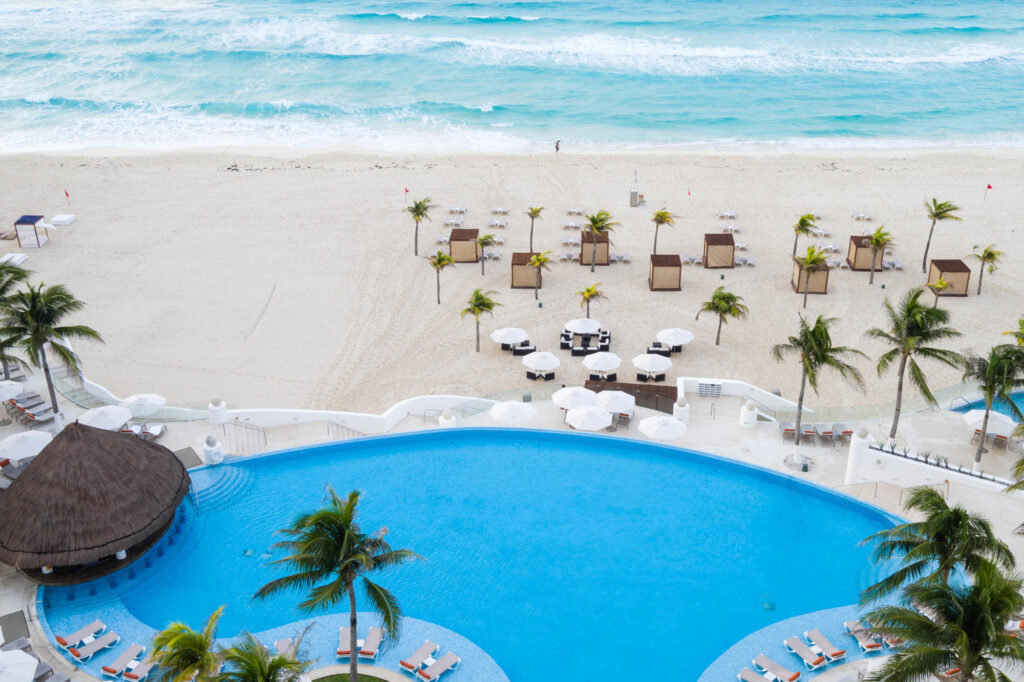
If you're looking for the best Cancun all-inclusive getaway money can buy, Le Blanc Spa Resort Cancun is your pick. Here, luxury services like butlers and fine dining meet an upbeat, but refined, setting. Even better? The stunning spa, pool, and beach views all make this a picture-perfect adults-only pick.

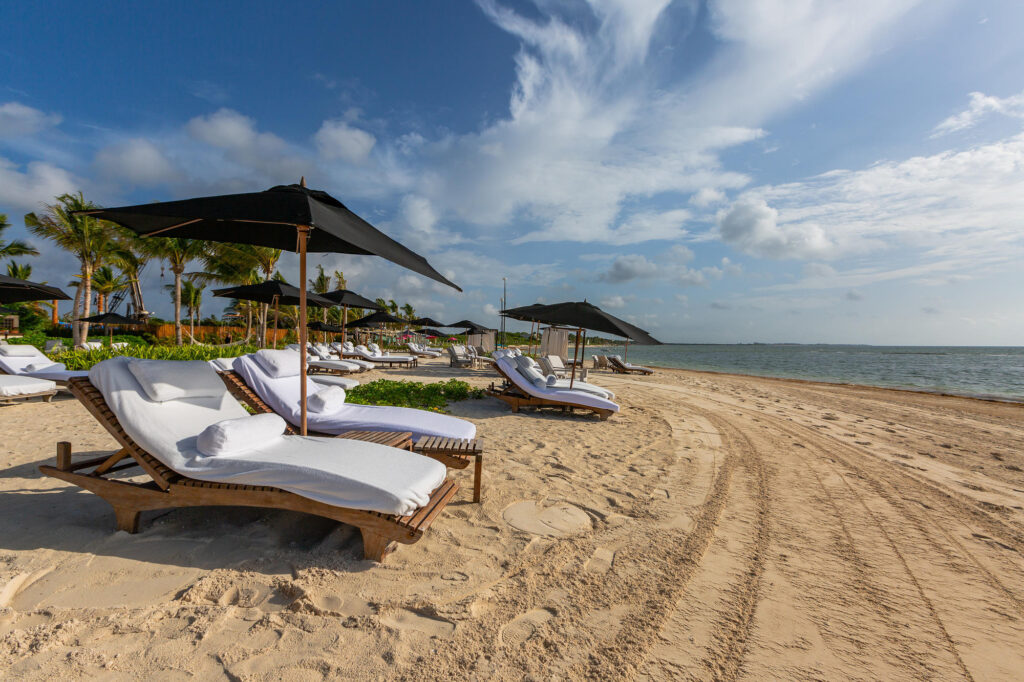
If you're searching for luxury in the Riviera Maya — whether traveling with your family or on a romantic couples getaway — it's hard to top the Rosewood Mayakoba. Gorgeous suites with private plunge pools seal the deal here, though everything from dining to the beautiful beach make this a top pick.

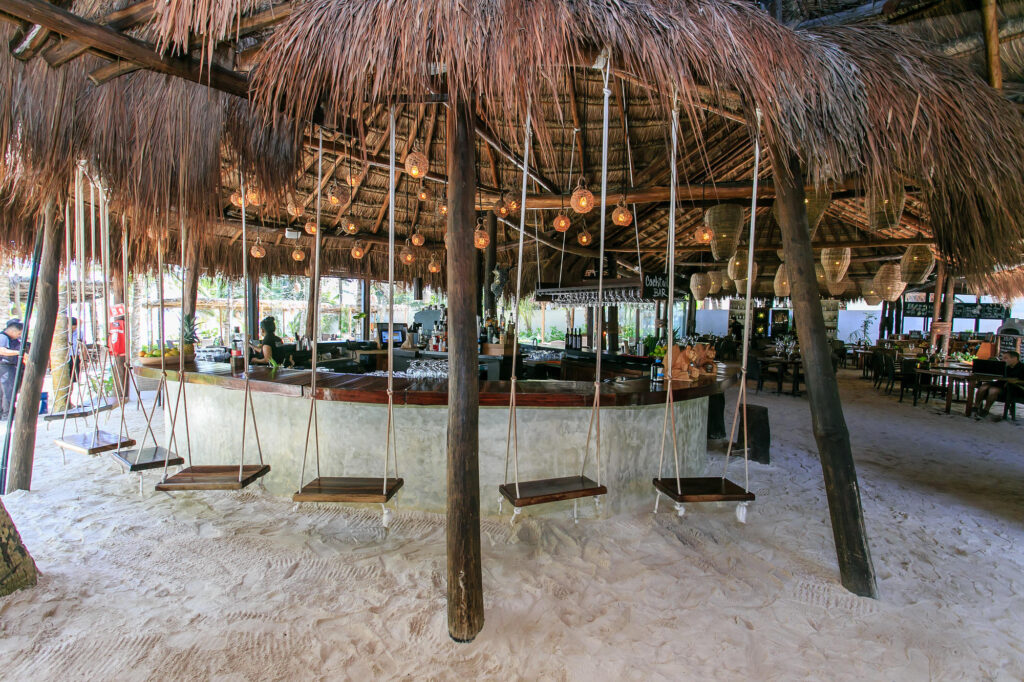
Great on-site dining, dedicated beach seating for every individual room, free yoga, a nice pool, and charming style all make The Beach Tulum a great adults-only option. We also love that every room looks onto the beach and includes either a hot tub or private plunge pool.

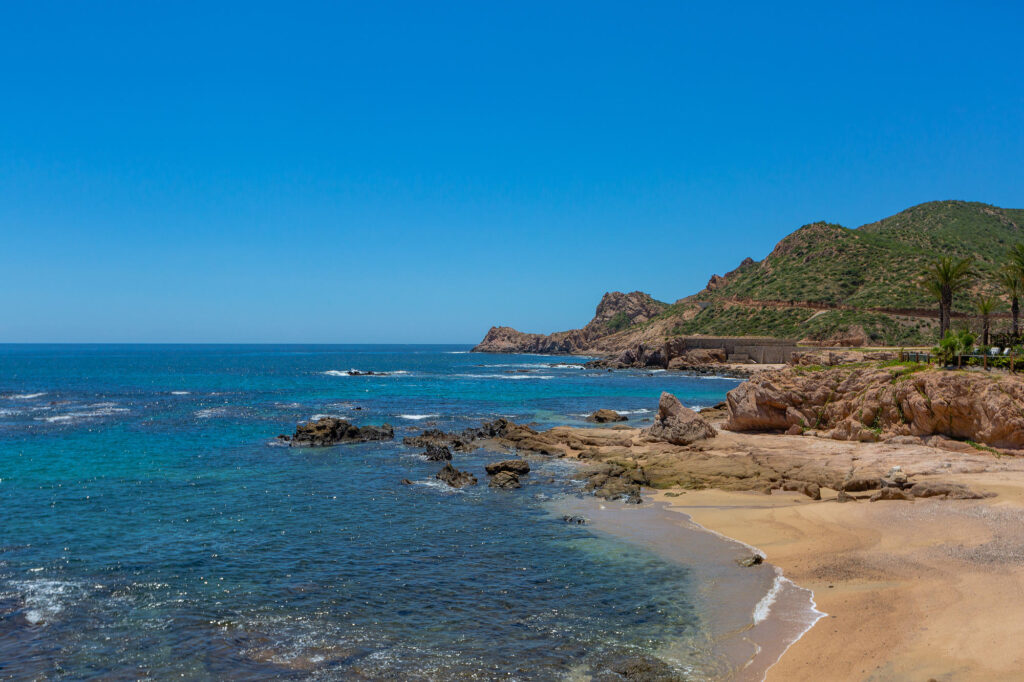
Los Cabos isn't known for its swimmable beaches, but Chileno Bay Resort & Residences sits right on one of the best swimming beaches in the region. And while that's all amazing, the sharp rooms, incredible dining options, high-tech kids' club, and great wellness programming all make this a great family or couples option.

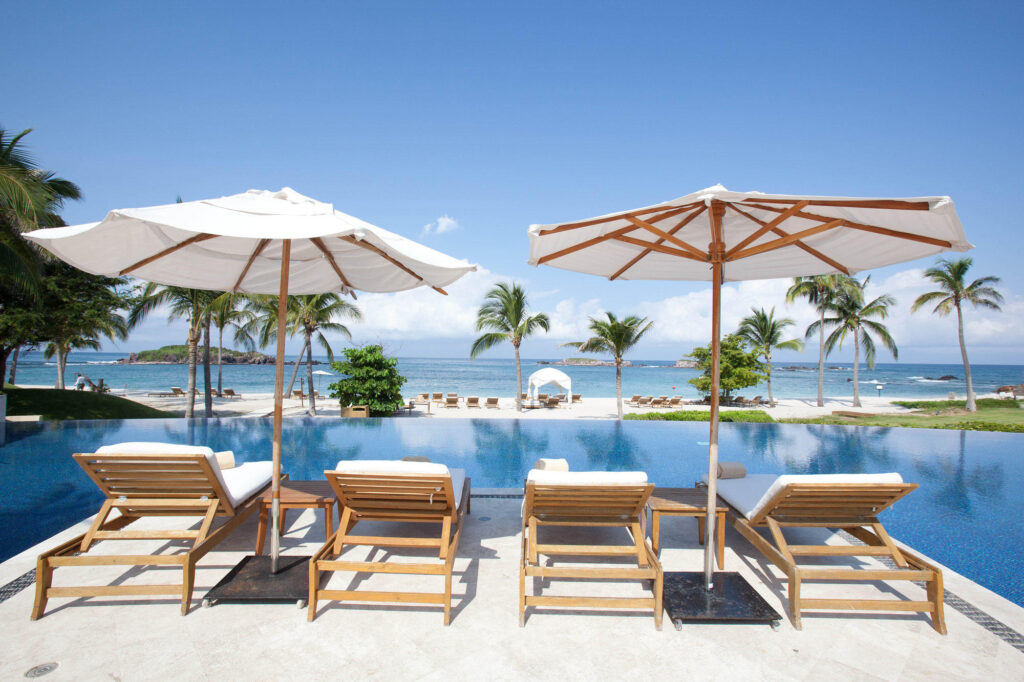
Puerto Vallarta can be a busy beach destination, so head to the Riviera Nayarit north of town. There, the ultra-exclusive St. Regis Punta Mita Resort sits inside of a gated community that's light years away from the real world. Handsome suites, a beautiful beach, and incredible spa all round out the features here (of course, the St. Regis level of service comes standard as well).

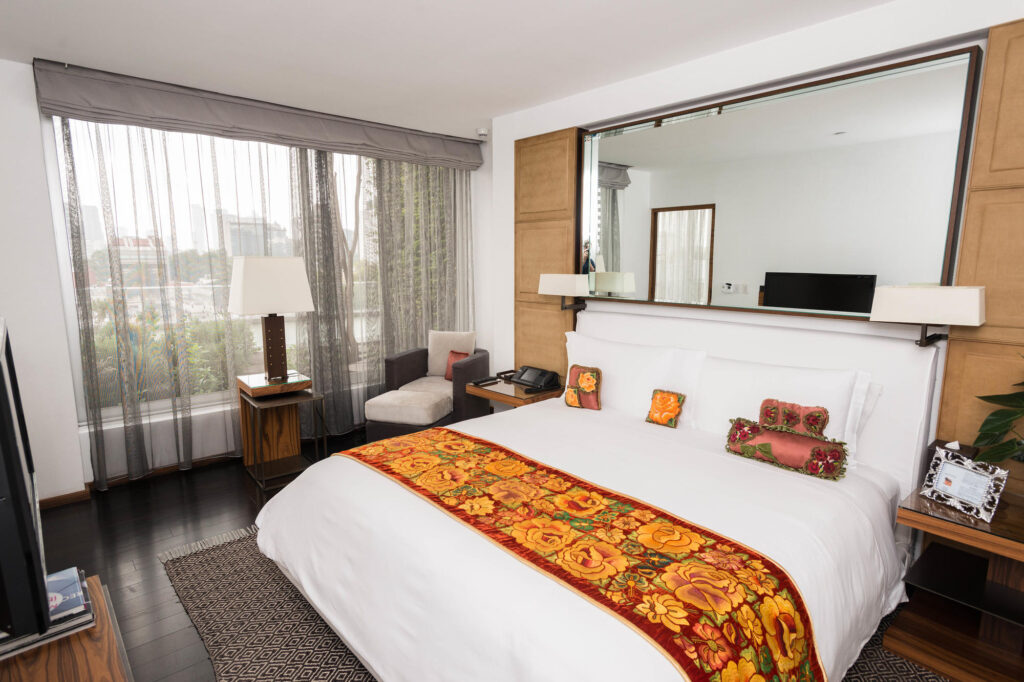
With its tony Polanco address, the design-savvy Las Alcobas continues to be one of the most popular boutique hotels in all of Mexico City year after year. The beautiful rooms are the star of the show, though you're near high-end shopping, dining, and nightlife here, as well as the famous National Museum of Anthropology.
